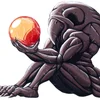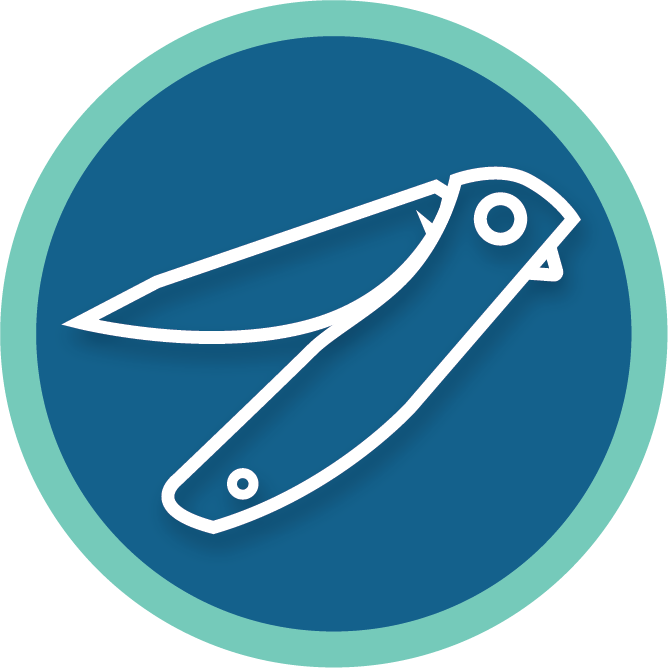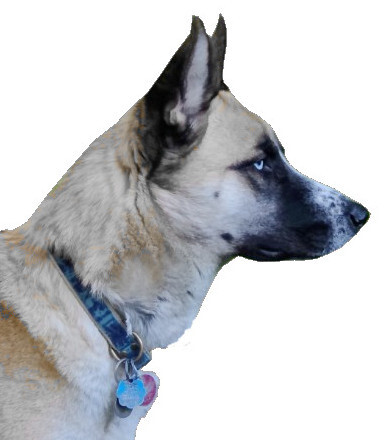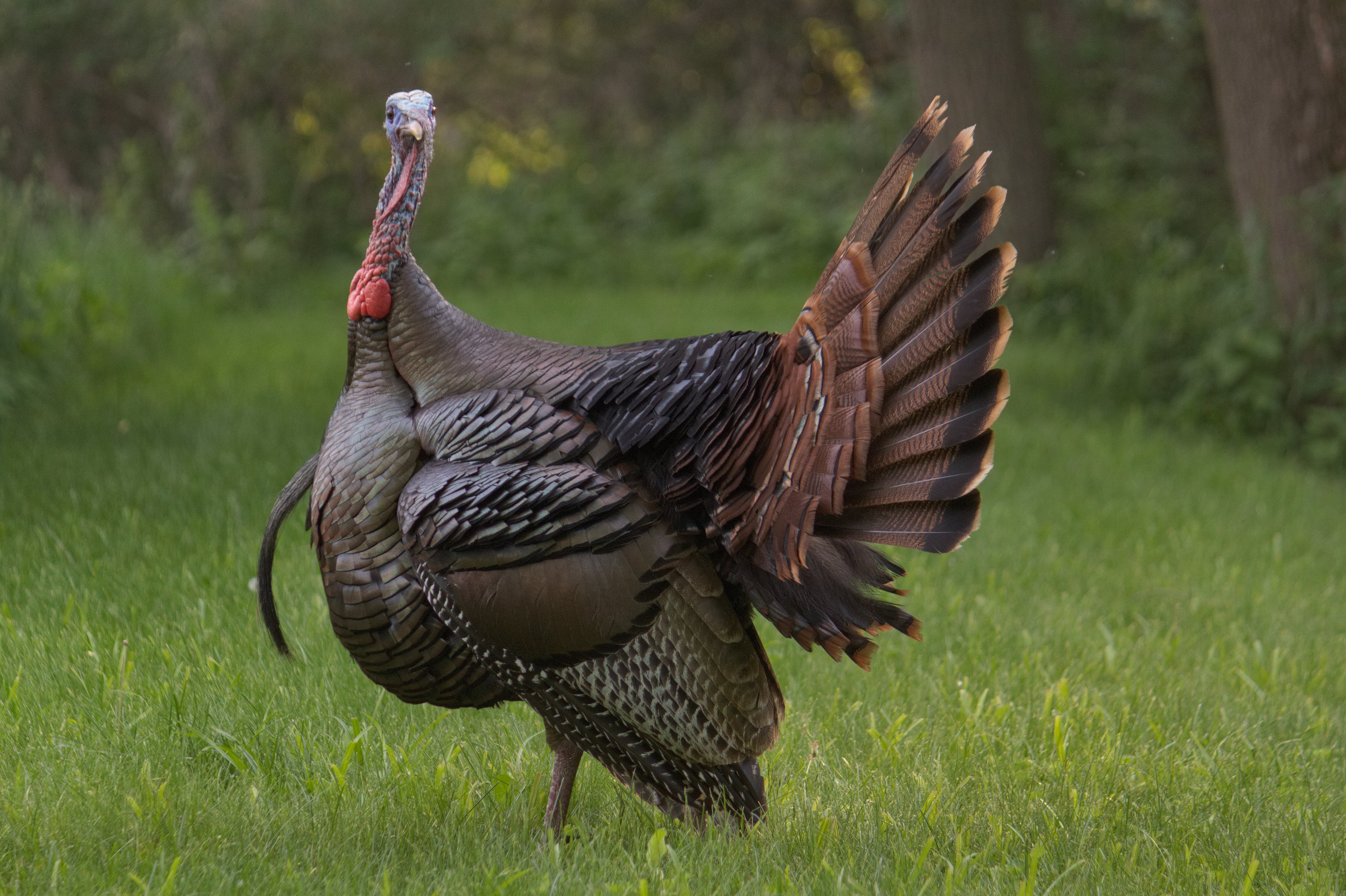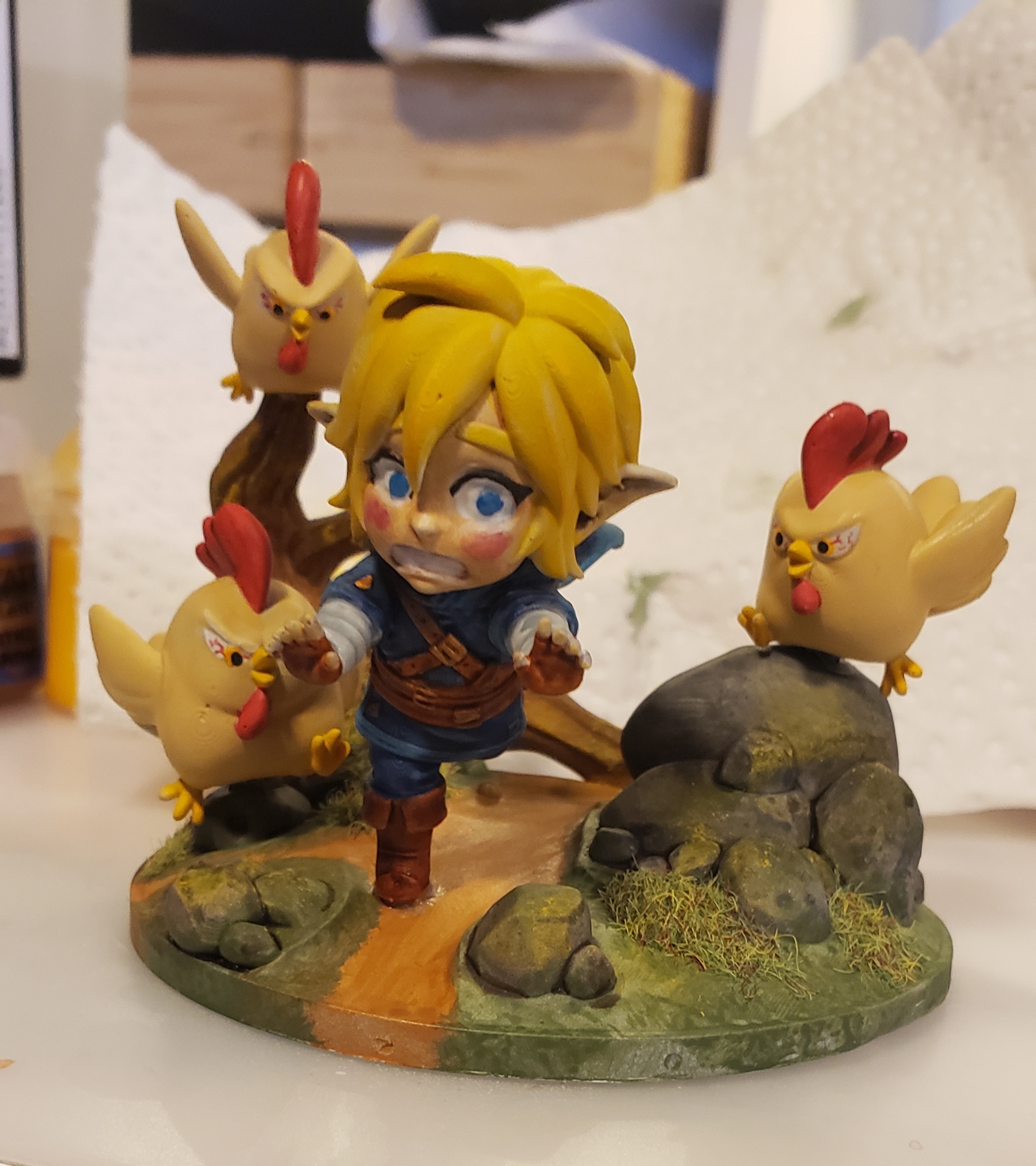Hey, was wondering if anybody might have any tips for me! I’ve been using a Worksharp Knife & Tool Sharpener MK2, and have this weird issue where my knives are coming out sharper on one side than the other.
I know that shouldn’t really make any sense, but I’ve got a knife right now that I have no problem shaving hairs off my arm with, but only with one side. If I flip it over, no matter what angle I approach with, I can’t knock away a single hair. The bevel is also significantly wider on one side, which I also can’t figure out how to correct but I’m sure is related.
I can’t tell if this has anything to do with the fact that the belt rubs against the steel in different directions when sharpening each side (up and into the blade on the left side, down and away from the blade on the right), or if perhaps this might be an error in technique on my part. As far as I can tell, I’m keeping the blade in line with the guides properly and not deviating significantly.
For what it’s worth, I’m working with a hawkbill blade. Meaning that I have to lower the knife as I draw it through the sharpener, to keep contact with the belt. I know this allows for a lot of room for error; I’ve been making an effort to ensure that I’m keeping the alignment correct the whole time, but it’s wholly possible that this may be where I’m messing something up.
Any ideas if I might be doing something wrong or something I could try to get a more even edge on both sides?
Honestly? Don’t use belt sharpeners, they fuck the metal up at the very edge. I’ll explain more if you want, but people turn into assholes about the subject, so I don’t go deeper without an invitation to do so.
That being said, what you’re dealing with is a burr.
When you sharpen a knife on anything the very edge gets bent over a little. It kinda rolls, and that’s what is behind a knife being sharp on one side and not another.
Doesn’t matter what the angle is, what the surface is, it’s about the physics involved in using abrasives and pressure on steel (or other metals). You can’t avoid building a burr, so you don’t try to. Instead, you work with it.
Since you’re using a grinder, you can’t use the usual method of “stropping” where you use the stone itself to gradually thin out and remove the burr (which, at a small enough scale, there’s still some burr left).
So you’ll have to actually strop, unless you have a stone handy. Any piece of leather will do because you don’t need abrasive for this. I say that because they’re are traces of silicates in leather, and some hides have more than others, so people tend to think you have țo strop om a leather that’s more gritty. All you have to do is alternate running the blade from spine to edge across the leather on each side. This “wiggles” the burr until it snaps off, leaving a more even edge.
Most of the time, people get hung up on the angle being precise and even across the length of the blade and think that’s the problem with their results. It very rarely is because the exact angle doesn’t matter at all past a fairly obtuse angle (anything where the angle of the edge with both sides taken into account is less than about 45 degrees). It’s a little less rare that it’s the angle being the same along the edge because as long as the actual edge, the very tippy tip sharp part is even, the rest only matters in terms of how easy it will get through material that’s thicker.
Consistent edges help cutting, but they aren’t essential to sharpness or keenness.
Sharpness is the degree of angle behind the actual cutting edge, and keenness is how thin that cutting edge is. When you look at edges under a microscope, the difference is more discernable than with the naked eye (and the site knifesteelnerds can show you such images, and links to others). What it amounts to is that it doesn’t matter what angle you sharpen at, or what you use to get that angle, what matters is that microscopic edge and how thin it is and how even it is.
So, with a belt grinder, use faster passes across the belt, use mild to soft pressure, and deburr once your angle is set.
You can test for a burr visually, but it’s easier to run a fingernail from the spine of the blade down to the edge, on each side. The side with the burr is going to catch the fingernail. But you can’t just strop that side. You gotta do both because that burr can switch sides. You actually want it to, because that gets it to come off, leaving the edge as clean as it gets.
Again, don’t worry about the edges being even per se. That’s only really important in details of use, not in getting a good cutting edge. A good cutting edge is about that microscopic edge being relatively even and as thin as possible.
I’ll explain more if you want, but people turn into assholes about the subject, so I don’t go deeper without an invitation to do so.
Please do! Even though a lot of it may end up going way over my head, I’m always eager to learn more.
As for the burr, I’ve definitely been able to feel it catch on my finger once I’ve built it up. The way I’ve been doing it is a few passes with the medium belt (P220) until I’ve got a nice burr formed, and then a few passes with the fine (6000) to refine it until I can no longer feel any burr. Would I still need to look into stropping the blade after the fine belt’s knocked off the burr? Or do I likely still have a burr that I just can’t feel anymore that’s still giving me trouble?
I think I might need to pick up a jeweler’s loupe or something so I can get a better look at the actual edge and see.
Well, the key to belt sanders causing problems is heat. You’ve got abrasives scratching metal at high speed.
That’s a lot of friction on a very small area. That friction on a bigger piece of metal is no big deal. But a knife edge gets very thin indeed. It simply can’t take the heat being generated at the edge and move it into the rest of the knife fast enough to prevent the edge, perhaps a few millimeters worth, from getting too hot.
This results in the heat treatment of the steel being undone. The little crystals of iron, carbon, and whatever alloying metals are present come apart from their neat little stacks and get disordered. The metal that’s left is more randomly arranged, so you can end up with very brittle (easy to break) or very soft (easy to deform) metal instead of what you started with.
Now, it’s only maybe half the width of a pencil lead at most, but that’s happening on the part of the knife that you rely on to cut things. It won’t stop cutting, but what happens is that it gets dull much faster than it otherwise would. This means that your knife not only wont last, but it needs sharpening sooner, which reduces the life of the knife.
By the time you would feel any heat, it’s too late. There are ways to mitigate that to some degree, but most people aren’t set up to water cool their sanders/grinders.
As far as the burr goes, there’s absolutely one still there. That’s the only thing that will cause one side of a knife to be duller than the other. The little V of a knife that is the edge, when the burr is absent, will always cut in either direction approximately equal. Equal enough that you’d have to do some very sensitive testing to tell the difference, and even that won’t be there on a theoretically perfectly formed edge.
You simply can’t remove a burr on a running belt. No matter how fine the grit, the speed involved curls the side away from the belt. Now, you could stop the belt, and use very low pressure strokes to remove the burr on that surface. Same as with a stone in that regard.
I can’t recall which model you said in the post, but most of the ones I’ve either used or seen used wouldn’t be my top pick up deburr on, but it should be doable as long as you go slow and the device is stable.
Unlike stropping on a piece of leather though, you do the movement with the edge leading, just like you would if sharpening on a stone. But you do it at a wider angle, and with the gentlest amount of pressure possible as you go. You’re wanting to mostly wiggle the burr without also doing much material removal as you go. There’s always some material removed, but with a light enough touch, it won’t be enough to cause an even smaller burr.
Tbh, I stopped using leather strops at all years ago based on some of the microscope images and videos that got shared at r/sharpening on reddit. Doing it on the stone is just faster and easier once you get a feel for the degree of pressure needed. So, if you can position things right to give you a stable surface to use, no need to mess with a dedicated strop, assuming you’ll keep using the belt grinder. I’ve had to improvise sharpening on sandpaper before, which is essentially the same thing, and you can definitely deburr on that kind of surface.
And, I agree, a loupe, or other magnifier that can get you to enough magnification to see the scratch pattern on the edge is a major plus. I had a usb microscope I was using for a while, and it’s lowest setting was 50×, and that was plenty for checking a burr. Overkill tbh. So a loupe should be about perfect.
Fwiw, all of this stuff I’m talking about here, I picked up from knifesteelnerds, Scienceofsharp, and the guys at r/sharpening for the most part. The subreddit is essentially useless now, but there’s info on it for how to access the discord server the really knowledgeable guys migrated to.
I will say this about your edge appearing to have uneven thickness from one side versus the other. Two things may contribute to that. The easy one, or at least the one you should be hoping for, is that you’re not holding the knife at the same angle when you’re grinding it on the left side versus the right. The Work Sharp belt sharpener isn’t foolproof, and I haven’t found the guides on mine to be very good. It still takes a decent bit of technique to get a consistent edge out of it, and even then it’s highly dependent on the bevel on your knife.
So option 2 is that the grind on your knife isn’t true. Not the edge, which is easy to deal with, but the actual taper from where it’s flat to where the cutting edge starts. That’s not uncommon on cheap knives, and it’ll exacerbate problem #1, above, if you can’t compensate for it. It’s hard to eyeball but you can suss it out with a digital caliper or a micrometer and a straight edge, if you’re careful. If that’s the case, it’ll never be right. You can make the apex of the edge true to the centerline of the blade, and with a decent guided sharpening jig you probably will. But it’ll always visibly look like it has more meat on one side than the other, because it does.
If I were you, I would reserve the belt sharpener for edge angle reprofiling or heavy duty un-fucking of a blade that’s got major nicks or chips in it. I have one, and I haven’t found it to be a good general purpose sharpening solution. I much prefer my Work Sharp guided bench stone or, ideally, my Spyderco Sharpmaker for actual decently precise sharpening of any of my knives that I give a fuck about. The belt sharpener will leave a major burr on your edge, and it’ll always tend to leave the same burr on the same side because as you have correctly observed the abrasive passes over the edge in one direction on one side and the opposite direction on the other, and it isn’t a tool very well suited to knocking that burr off. You always wind up having to finish it with a regular stone if you want to wind up with a decent finished job, and it always takes more work on one side than the other.
And this is coming from a bird who uses a fucking Harbor Freight belt sander to grind swords and bush choppers, machetes, axes, and mower blades. Such things have their place in the world, but fine cutlery usually isn’t it. When belt sharpening, you always want to have the abrasive moving from the edge back towards the spine, which when you’re freehanding on a belt sander you can do easily by just flipping the blade over. Not so on the Work Sharp.
Thanks for the advice! I think the Sharpmaker may end up being my next purchase. I’m working with N690 steel; would you recommend using the stones that come with the base model, or should I be looking at one of their alternate stones?
I always recommend having a pair of the diamond stones on hand because otherwise the two ceramic ones it comes with are so fine it can take a month of Sundays if you ever need to rework some blade or other into either of the Sharpmaker’s two built in angles. It can take a lot of time but if you finish with the white stones it comes with you can make things ridiculously sharp with it.
The blade should always be oriented so the belt is moving in the spine-to-edge direction. Using it in the other direction (into the blade) will grind away the metal faster and less evenly, It sounds like that is what’s happening.
It’s also worth noting that any kind of inward curve is difficult to sharpen evenly on a belt (or any other wide sharpening surface). You may get better results if you try to work along the edges of the belt instead of the center. For hawkbills and recurves I generally use a narrow sharpener, like an edge of the triangular Spyderco Sharpmaker rods. It takes longer than using a belt, but it produces a very clean bevel and edge.
Best of luck!
The blade should always be oriented so the belt is moving in the spine-to-edge direction. Using it in the other direction (into the blade) will grind away the metal faster and less evenly, It sounds like that is what’s happening.
This was my thinking, as well! It always struck me as odd when the instructions and their YouTube videos have them pull both sides in the same direction, because I feel like there’s no way that it should be producing an even edge. I would assume that grinding in from one side and out on the other would result in a naturally rolled edge somehow, but it otherwise seems to sharpen as I’d expect, so maybe there’s some other physics at play that I’m not understanding.
Unfortunately, I’m not able to try reversing the direction I pull the blade through so that I get the same grind direction, as the motor blocks me from pulling the knife through the back side (though I could probably do that if I was working with a straighter edge shape).
I suggest you try some other kind of sharpener. One of the inexpensive pocket sharpeners with crossed abrasive rods would work. Just make sure you get one with diamond and ceramic, not carbide. This is my favorite of those: https://www.amazon.com/gp/product/B00AU6CM2I/ref=ppx_yo_dt_b_search_asin_title?ie=UTF8&psc=1
Unfortunately, I’m not able to try reversing the direction I pull the blade through so that I get the same grind direction, as the motor blocks me from pulling the knife through the back side (though I could probably do that if I was working with a straighter edge shape).
If you were sharpening on a whet stone, you could sharpen by pushing or by pulling (or both!). I don’t think the direction of the belt is the issue here. I think you probably have a bur and need to strop but I also think that this is just part of the learning curve. Make sure you’re not rushing one side vs another because it might feel different. Keep the belt speed low, and make sure you’re progressing through the different belts on both sides with the same amount of time.
Sharp on one side but not the other? That’s likely a burr.
Burrs are sharp, until they rollover or break off.Usually you’d get rid of it by alternating passes into the knife with lighter pressure, moving to higher grits.
Although, it might be difficult or awkward to control the direction and pressure with a power tool.
Another thing with some sharpening gizmos is not including the right grits.
Something Iike a 200 grit, then skipping to a 1000 grit can make weird results that kinda feel sharp enough at first, but with a toothier edge where the higher grit cannot really do its job except at the outermost superficial surface and not in the deeper portions left by the low grit.
